History of Nizhyn
Foundation of Nizhyn
According to the results of archaeological excavations on the territory of today’s Nizhyn and its environs, traces of settlements of the Bronze Age, the early Iron Ages and the Slavs were discovered. Ancient Roman coins of the first centuries AD, jewelry of the 4th-5th centuries and Kievan Rus’ silver coins of the 10th-11th centuries were found here. Within the city limits, there are remains of two old Rus’ settlements and several villages of the 10th-13th centuries.
In the Tale of Bygone Years (1113), under the year 1078, “Nezhatina Niva” is mentioned, the place of the battle between the old Rus’ princes. This battle is also mentioned in the Tale of Igor’s Campaign (1185). It is believed that the first name of Nizhyn was “Nezhatin” (from the Old Slavic male name “Nezhata”), and the area was called “Nezhatina Niva”.
In 1135, Nezhatin was mentioned among the towns burned by the Polovtsians. Since 1147, there is a mention that there was a town called Unenozh in this area. In the 12th century, it was a fortified settlement of the Chernihiv Principality, one of the largest and most powerful states within Kievan Rus’.
In 1239, a detachment of the Mongol Khan Mongke on the road to Chernihiv destroyed the fortification of old Nizhyn (traces of fire and Mongolian weapons were found during archaeological excavations). In 1320, the Nizhyn settlement became part of the Grand Duchy of Lithuania.
More historical facts…
Nizhyn in the 16th-17th centuries
As a result of the Russian-Lithuanian war of 1500-1503, according to the Blagoveshchensk truce, the settlement as part of the Chernihiv-Seversky lands became part of the Russian state. In 1514, it was first mentioned in written sources under the name of Nizhyn.
During the Time of Troubles in Russia (1598-1613), it was captured by Polish troops. In 1618, according to the Truce of Deulino, which ended the Russian-Polish war of 1609-1618, Nizhyn, as part of the Seversky land, came under the rule of Poland and became part of the Kiev Voivodeship.
In 1625, by order of the Polish king Sigismund III Vasa, a wooden and earthen fortress was built in Nizhyn, as it was a border town. In the same year, Nizhyn was granted the Magdeburg Rights, land holdings and a coat of arms depicting Saint George the Victorious.
In June 1648, during the Khmelnytsky Uprising (also known as the Cossack-Polish War of 1648-1657), rebels occupied Nizhyn, after which the town became the center of the Nizhyn Cossack regiment. Under the terms of the Treaty of Zboriv of 1649, Nizhyn was returned to Poland. However, the return of the Polish and Lithuanian gentry caused the uprising of 1650. Under the terms of the Treaty of Bila Tserkva of 1651, Nizhyn was again returned to the Commonwealth.
In 1654, according to the Pereiaslav Agreement (a meeting of representatives of the Zaporizhzhya Cossacks, headed by Hetman Bohdan Khmelnytskyi), the Cossacks pledged allegiance to the Tsar of Russia Alexei Mikhailovich. The territory controlled by the Zaporizhzhya Cossack troops, including Nizhyn, became part of the Tsardom of Russia on the rights of autonomy. According to the census, about 11,600 people lived in Nizhyn at that time. For comparison, the population of Kyiv was about 7,800.
In 1657, after the death of Bohdan Khmelnytskyi, representatives of various groups of Cossacks fought, trying to determine whether they should be under the rule of Moscow or under the rule of other states. It was not possible at that time to create an independent Ukrainian state. In 1663, a general council of the Cossacks was held in Nizhyn.
During the election of the hetman, armed clashes took place between the supporters of the candidates. As a result, Ivan Briukhovetsky was elected. His opponents, Yakim Somko from Pereiaslav and Vasily Zolotarenko from Nizhyn, together with their closest supporters, were accused of treason and executed by a military court.
In 1668, after the death of hetman Ivan Briukhovetsky, those representatives of the Cossacks came to power who saw no other way out than to recognize the superiority of the Moscow authorities.
Nizhyn in the second half of the 17th - 19th centuries
In the 17th-18th centuries, due to its location on the trade routes between the Commonwealth, the Ottoman Empire, and the Russian Empire, Nizhyn became a multinational town. Since the 1650s, Greek merchants invited to the town gained significant influence in Nizhyn. In 1675, Greek merchants founded their colony here. Having settled in Nizhyn, the Greeks began an intensive trade in cloth, fabrics, gold, and silver. They had their own magistrate, court, church, school. The largest number of Greeks in Nizhyn was in 1746 - about 1,800 people (7% of the town’s population).
In the 17th century, Nizhyn occupied a predominant place in trade with Moscow and was one of the leading centers of domestic and foreign trade. In 1694, Nizhyn sold goods to Moscow in the amount of 6,970 rubles, while Kyiv - 5,102 rubles. In the 1780s, the turnover of the three Nizhyn fairs amounted to 1 million 800 thousand rubles.
In 1708, Nizhyn, during the first provincial reform of Peter I, became part of the Kyiv Governorate. In 1777, on one of the main streets of Nizhyn, a retired medical doctor of the Izyum Hussar Regiment, Mikhail Ligda, opened a private pharmacy - the first in Left-Bank Ukraine. In 1781, Nizhyn was included in the Chernihiv Governorate. In 1782, the population of the town was about 11,100 people.
At the end of the 18th century, in connection with the conquest of the Crimea and the Black Sea region by the Russian Empire, Nizhyn lost its significance as a commercial and military-administrative center.
In the first half of the 19th century, Nizhyn became an educational and scientific center. In 1820, the Gymnasium of Higher Sciences of Prince Bezborodko was opened here. This privileged educational institution gave an encyclopedic higher education for the children of nobles. In 1826, a theater was opened at the gymnasium. In 1821-1828, Nikolai Gogol, one of the classics of Russian literature, studied at this gymnasium. Here he first appeared on the stage of the theater as an actor and director of performances.
In 1846, there were about 9,300 residents in Nizhyn. In 1852, on the outskirts of Nizhyn, the famous Nizhyn treasure of old coins was found - 200 silver coins, one part of which belonged to the era of Kyiv Prince Vladimir (956-1015), and the other part - to the era of Yaroslav the Wise (978-1054). In 1873, a large treasure of Roman silver denarius of the 4th century was discovered in Nizhyn.
In 1866, the population of the town was about 18,000. In 1869, the Nizhyn station of the Kursk-Kyiv Railway began its work. In 1881, the first monument to Nikolai Gogol in the Russian Empire was opened in this town. In 1897, about 32,100 people lived in Nizhyn.
Nizhyn in the 20th century
In January 1918, Soviet power was established in Nizhyn. On March 5, 1918, during the ongoing World War I, Nizhyn was occupied by the advancing Austro-German troops, who remained here until November 1918. The power in the town changed several more times. During the Civil War, Nizhyn was badly damaged.
After the Civil War, the restoration of the local economy began. In 1921, a butter factory, a mechanical mill, a plant for farming machines, a shag factory, a brewery, and industrial cooperatives began to operate; the Institute of Public Education (scientific and pedagogical institute), technical schools of mechanization, transport and medical schools were opened. In 1927, a new city power station was put into operation - an interesting example of the architecture of the era of constructivism.
In 1939, the population of Nizhyn was 39,348 people. On September 13, 1941, during World War II, Nizhyn was occupied by German troops. On September 15, 1943, the Red Army regained control of the town. During the war years, more than 9 thousand residents of Nizhyn fought on the fronts; more than 3 thousand of them were killed in action. During the German occupation, about 5 thousand residents of the town were shot in the quarry of the local brick factory, 415 people were relocated for forced labor in Germany.
In 1954, Nizhyn had a mechanical plant, a wagon-building plant, a vegetable processing plant, a butter factory, a garment factory, a pedagogical institute, 3 technical schools, an obstetric school, 10 secondary and 5 seven-year schools, 2 libraries, a cultural center, a movie theater, and 7 clubs.
From 1959 to 1989, the population of Nizhyn almost doubled, it increased from 46,211 to 80,553 people. The local economy was based on enterprises of mechanical engineering, chemical, light, and food industries. In 1991, the population of the city reached 82 thousand people.
In September 1993, the residents of Nizhyn celebrated the 1,000th anniversary of the founding of the city. Since 1996, the annual Intercession Fair has been resumed in Nizhyn.
Pictures of Nizhyn
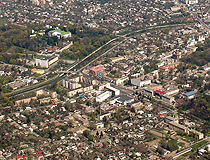
General view of Nizhyn
Author: Vladimir Kalinin
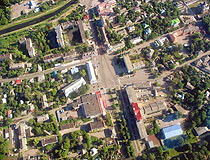
Nizhyn from above
Author: Vladimir Kalinin
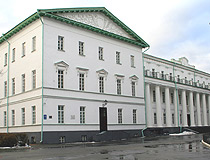
Nizhyn Gogol State University
Author: Gennady Serdyuk
Nizhyn - Features
Today’s coat of arms of Nizhyn depicting Saint George the Victorious, adopted in 1992, generally repeats the first coat of arms of the town given to it by order of the Polish king Sigismund III Vasa in 1625. The City Day of Nizhyn is celebrated on May 6 (Saint George’s Day).
Nizhyn is famous for its tasty pickled cucumbers, which have become one of its symbols. This story has been going on since the 17th century, when a Greek colony was formed in Nizhyn. In addition to trade, the Greeks were also engaged in agriculture, and in particular, the cultivation of cucumbers, a vegetable at that time quite exotic for this region.
They grew cucumbers in the floodplain of the Oster River and salted according to their unique recipe, which was kept secret. These pickled cucumbers quickly gained popularity and were considered the best snack among the townspeople. Soon, their fame spread beyond Nizhyn and even the Chernihiv region.
According to legend, Grigory Potemkin, a favorite of Empress Catherine II, was the first to taste this product of the “Nizhyn Greeks”, and then treated them to the Empress. Catherine II ordered to invariably deliver Nizhyn pickled cucumbers to St. Petersburg, the capital of the Russian Empire. In 2005, a monument dedicated to the Nizhyn pickle was opened in Nizhyn.
In Nizhyn, a significant part of the historical buildings of the 17th-18th centuries has been preserved. In total, there are about 300 historical buildings in the city, of which more than 70 are of great cultural and historical value. There are 6 monuments of archeology, 55 of history, 12 of monumental art in Nizhyn. On the right bank of the Oster River, remains of burial mounds and settlements of the period of Kievan Rus have been preserved.
Due to the large number of historical and architectural monuments, street monuments and memorials, Nizhyn can be rightfully called an open-air museum.
In total, there are 7 main historical and architectural complexes in Nizhyn:
- Historical and cultural complex of the Greek Brotherhood of the 18th century
- Architectural and landscape complex of St. Nicholas Cathedral, the Annunciation Monastery, Gogol Street, and the central square of the 17th - early 20th centuries
- Historical and cultural complex of the Nizhyn Post Office (1870s)
- Religious buildings, public and residential buildings on Moskovska Street of the 18th - early 20th centuries
- Historical and cultural complex of the Nizhyn castle and Bazarna Street
- Architectural and landscape complex of the Nizhyn Gymnasium of Higher Sciences and Gogol Square
- Historical and cultural complex of the Vvedensky Convent
The most famous people born in Nizhyn are Yuri Lysianskyi (1773-1837), an explorer, who headed the first Russian circumnavigation; Nikolay Samokish (1860-1944), a Russian and Soviet painter and illustrator of Ukrainian Cossack descent; Olga Khokhlova (1891-1955), a ballet dancer and the first wife of Pablo Picasso; Mark Bernes (1911-1969), a Soviet actor and singer.
Main Attractions of Nizhyn
Monument to Nikolai Gogol (1881) - a monument of monumental art of national importance in Nizhyn, on the main alley in Hoholivs’kyy Park. This is the first monument to Gogol not only in Ukraine, but also in the then Russian Empire. The initiators of the creation of the monument were former graduates of the Gymnasium of Higher Sciences of Prince Bezborodko (today’s Nizhyn Gogol State University), where Gogol studied in 1821-1828. The monument is a bronze bust of Gogol (0.9 m high) on a granite pedestal (2.7 m high). Hoholivska Street, 4.
St. Nicholas Cathedral (1650s-1660s) - an architectural monument of national importance, one of the earliest examples of Ukrainian baroque located in the immediate vicinity to Hoholivs’kyy Park. This cathedral recreates in brick the usual techniques of Ukrainian folk wooden architecture. In total, there are about a dozen old churches in Nizhyn, which are architectural monuments of national and local significance. Batyuka Street, 16.
Greek Quarter. Nizhyn is rightly called the Ukrainian Greek capital. In the middle of the 17th century, Greeks began to move to this town. Subsequently, the northernmost Greek community was formed here. They settled in the quarter, the center of which was Grecheskaya (Greek) Street (today’s Hrebinky Street).
In the 18th century, this street was built up with stone private houses, some of which have survived to this day. Here, next to each other, there are three churches built by the Nizhyn Greek Brotherhood: St. Michael’s Church (1719-1729), Trinity Church (1727-1733) and All Saints Church (1782). All of them are architectural monuments of national importance and form a unique historical and cultural complex. The Greek Quarter of Nizhyn is located just to the north of St. Nicholas Cathedral.
Monument to Nizhyn Cucumber (2005) - an unusual monument in honor of famous Nizhyn cucumbers and masters of their pickling. It became the first monument to a vegetable on the territory of Ukraine. The monument is located in a public garden not far from the buildings of the Nizhyn Cannery (Shevchenka Street, 160), one of the producers of pickled cucumbers in Ukraine. The cucumber itself is made of rare (for Ukraine) green granite, the material for the monument was brought from Italy.
Hrafskyy Park of Nizhyn Gogol State University - a park-monument of landscape gardening art of local importance created in the second half of the 18th century. There are two ponds in the park, about 100 species of trees and shrubs, as well as rare plants. Also here you can find the old building of Nizhyn Gogol State University (one of the oldest institutions of higher education in Ukraine) with several museums: the Museum of the History of Nizhyn Higher Education, the Museum named after Nikolai Gogol and an art gallery. Hrafska Street, 2. The Museum of Rare Books with about 3,500 exhibits is open in the university library. Hoholivska Street, 4.
Nizhyn Post Station Museum. On the territory of Ukraine there is only one complex of buildings of the post office, which existed in the 18th century. In the 17th-18th centuries, Nizhyn was one of the largest trading towns of Left-bank Ukraine, the main post routes to Kyiv, Moscow, St. Petersburg, Riga, Poltava, and the Crimea ran through it.
This post station was visited by a lot of famous people during their travels: Taras Shevchenko, Alexander Pushkin, Nikolai Gogol, Alexander Griboedov, Mikhail Lomonosov, and others. In total, more than 500 items are exhibited here, one way or another related to the development of postal services in Nizhyn and on the territory of Ukraine. Poshtova Street, 5.
Nizhyn Local Lore Museum. This museum is housed in a picturesque two-story brick building of the mid-19th century. The most interesting collections of the museum are documents of the 17th - 20th centuries; orders and medals, numismatics and philately; household items and folk traditional clothes of the 19th -20th centuries; icons and books of the 18th - 19th centuries; cold and firearms of the 18th - 20th centuries; archaeological collection - stone and iron tools, fragments of molded ceramic dishes. Batyuka Street, 14.
Museum-Pharmacy of Mikhail Ligda. Mikhail Ligda, a Nizhyn Greek by origin and a retired medical doctor of the Izyum Hussar Regiment, opened his pharmacy in Nizhyn in 1777. It became the first private pharmacy in Left-bank Ukraine. The original building of the pharmacy has survived to this day and is still used for its intended purpose. There is also a small museum exhibition here. Moskovs’ka Street, 6v.


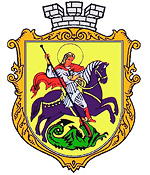



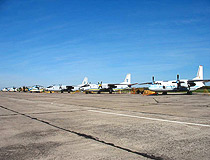
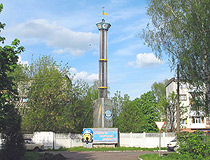
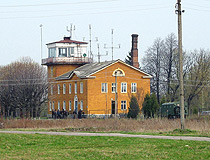
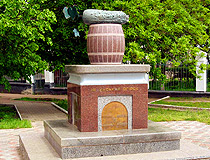
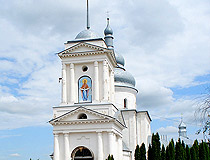
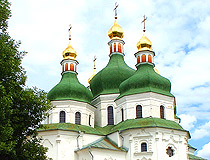
The comments of our visitors